How to remove the pellets from the jacket?
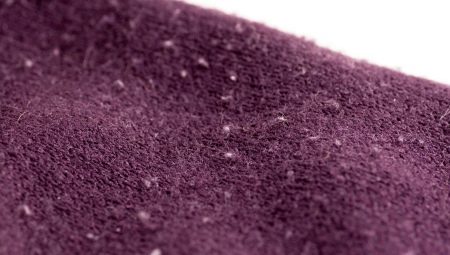
Woolen things require careful attitude to themselves. They fail quickly and the spools are the first sign of wear. These clothes look shabby and ugly.
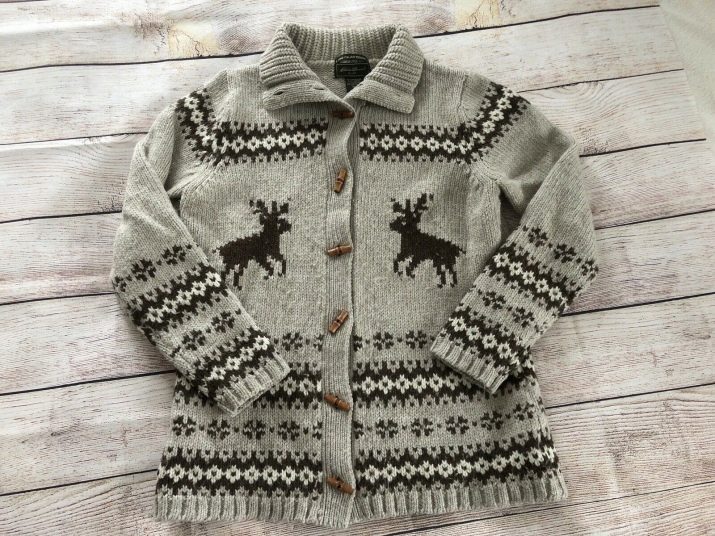
The reason for the appearance of pellets
The pellets are caused by friction. Therefore, there are more of them in those places where the thing most often comes into contact with other objects. For example, sweater sleeves to the elbow. Washing with other clothes in the machine drum also contributes to friction and wear.
The quality and composition of the fabric also affects the service life of the product. The higher the percentage of synthetics in the composition, the faster the pellets will appear. Things made from natural wool are less susceptible to this.
There is also a manufacturing defect. When the thread is not twisted correctly, broaches occur. They are clearly visible, so it is important to pay attention to the quality of the thread even at the stage of purchase. The thing initially looks loose and untidy.
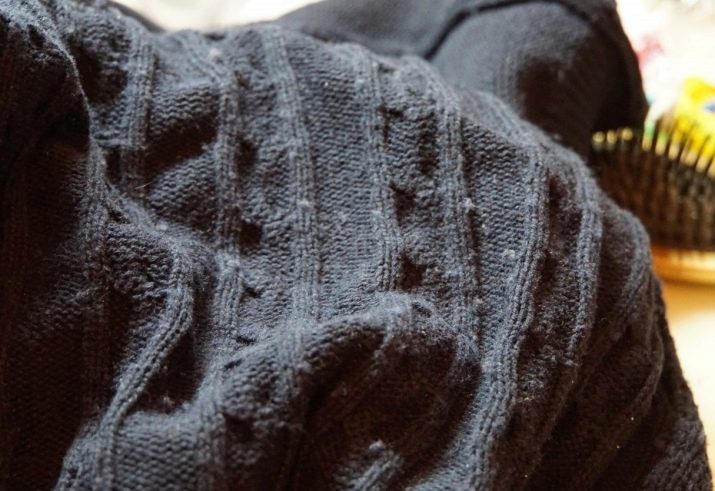
Pills appear faster at the broach places.
How to remove the pellets?
There are several ways to remove the pellets. They all boil down to cutting or tearing off the hated "balls".
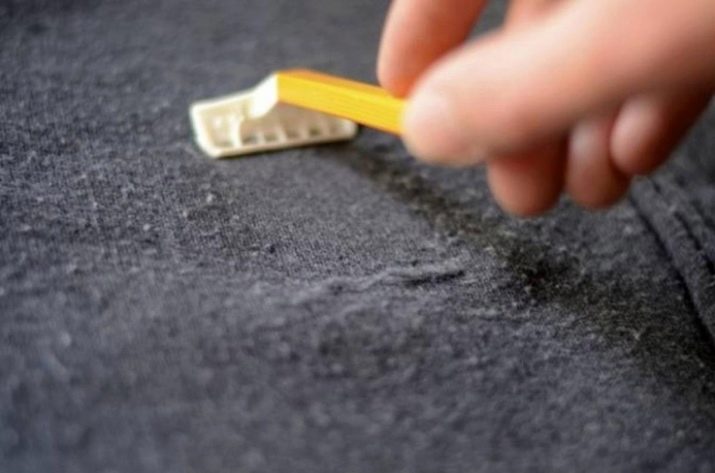
Pilling machine
A special electrical appliance, somewhat reminiscent of an electric shaver with a coarse mesh, which can be operated from an outlet and a battery. Has a knife adjuster, which allows you to change their height and not touch the fibers and decor, such as sequins. The spools are collected in a special container, so the knives and the device itself do not need to be cleaned.
If the regulator is not provided in the machine, then it should be used very carefully so as not to cut the fabric. The device is inexpensive and easy to use, but cheap models quickly fail.
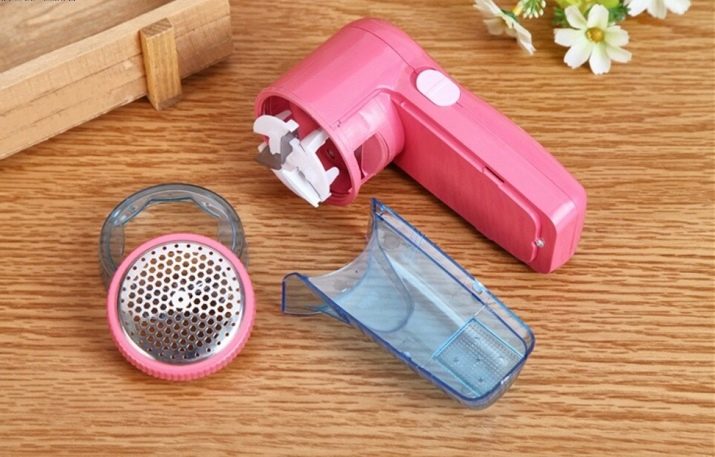
Great for cashmere, mohair and angora garments.
Razor and scissors
The principle is the same as that of a typewriter, only you have to work manually. It is best to use a used razor with dull blades, so as not to ruin the thing inadvertently. Shave off the pellets with a machine from the bottom up, periodically cleaning it. It is more convenient to work in pairs: one holds the fabric, slightly pulling it, the other “shaves” it.
Cleans quickly and effectively, but requires gentleness. Even a dull blade can damage the filaments or cut the decor. Suitable for socks, hats, tights and any other smooth items without embossed patterns. Not recommended for use on mohair and angora.
You can also cut off the pellets with scissors. This is the most time consuming method of all. Each spool will have to be removed separately.
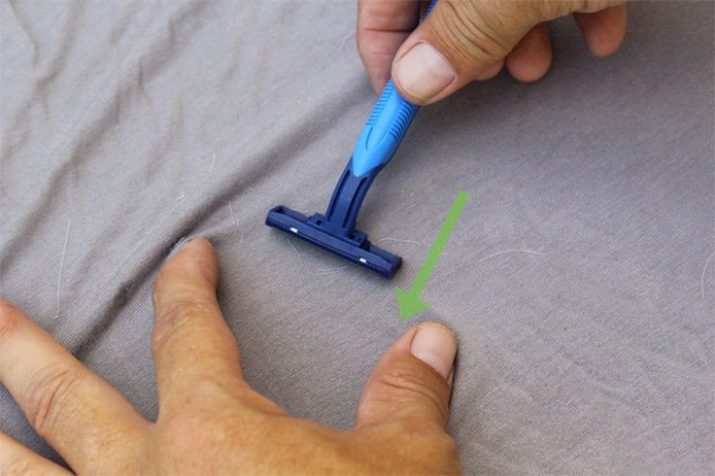
Suitable for removing large "balls" on knitted clothes or a small amount of them.
Scotch tape or duct tape
Suitable only at the initial appearance of the pellets. The tape or plaster is firmly applied to the desired area, and then comes off abruptly. The procedure can be repeated several times. This method does not give 100% of the result. For greater effect, you need to choose the most adhesive tape.
Alternatively, you can try to clean the clothes from the pellets. with a cleaning sticky roller. It has less effect, but will pick up dust and pet hair well.
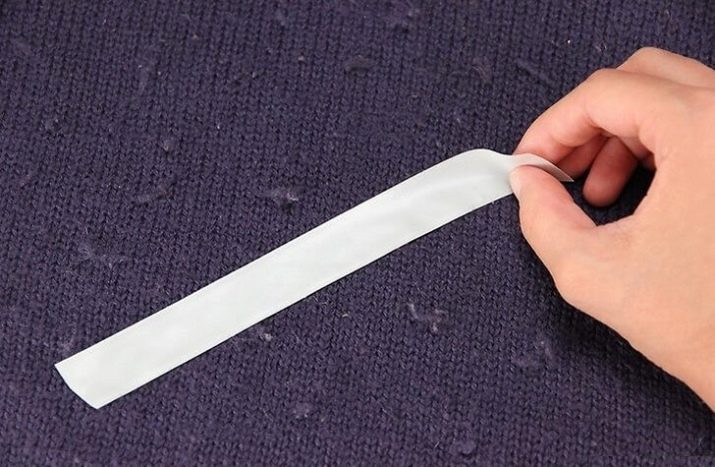
Peeling brush
There is a special brush for removing lumps, which is called the "peeling brush". The name is unusual, but it fully reflects the essence of the process. It perfectly removes signs of wear and does not damage the product. The brush is carried over the clothes in one direction from top to bottom.
Outwardly, it does not at all look like a bristled brush. Available at handicraft stores.
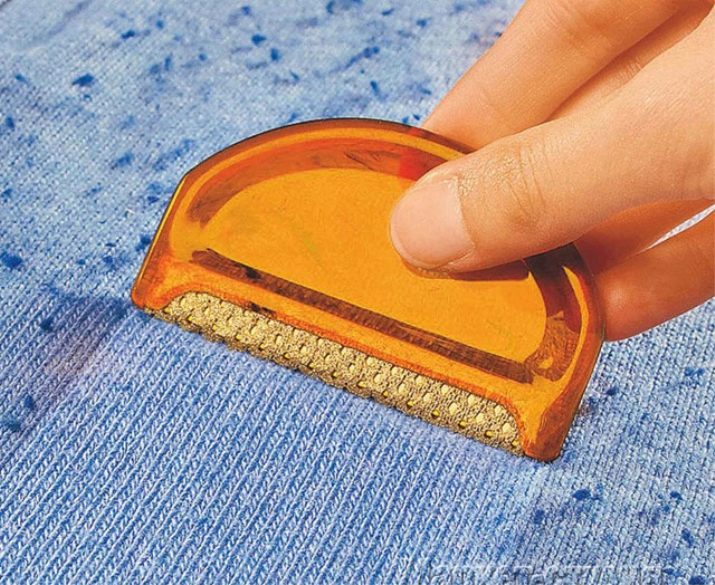
Toothbrush
Suitable for capricious mohair, cashmere, angora and other soft items, including those with long hair. Anything that cannot be “shaved” can be brushed with a soft toothbrush.
Guide the brush along the grain without pressing hard. The method is laborious, but more gentle for woolen things. If the operating conditions allow, then after cleaning the jacket can be soaked in warm water with the addition of vinegar. The fibers will fluff up and the appearance will improve.
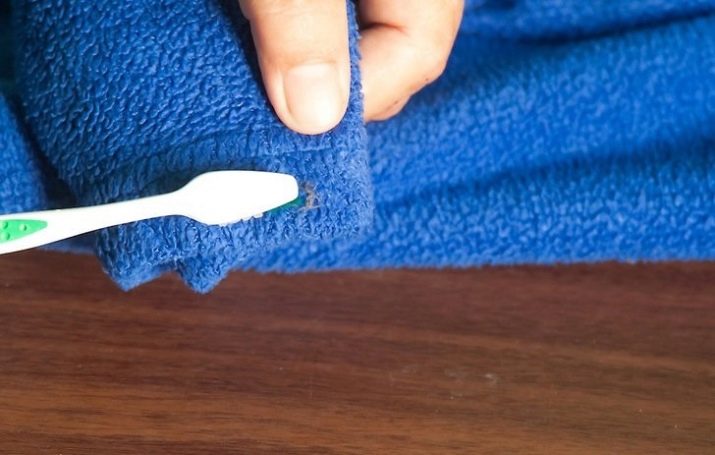
Sandpaper and dishwashing sponge
Fine sandpaper is required for cleaning. Clean in the same way as with a shaving razor, from bottom to top. You need to work carefully, otherwise scuffs will appear, and holes in the place of damaged fibers. And more pellets themselves will form.
The dish sponge is softer. Use only a new, always dry, hard side. Suitable for delicate fabrics.
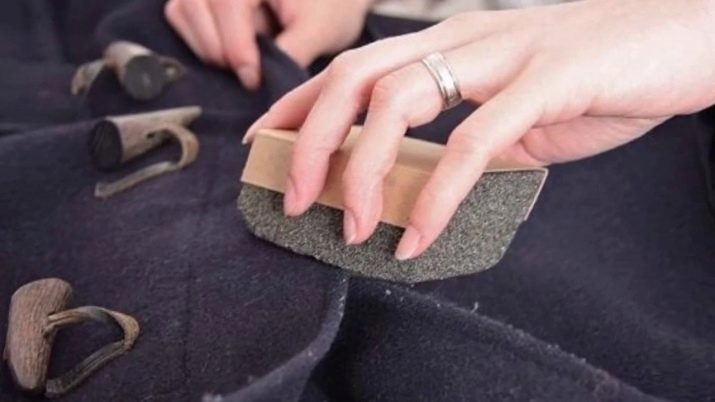
Bread crumbs
There are two ways to use it. In the first, the pellets are cleaned off with a rusk in the same way as with a sponge for dishes. The second method uses bread crumbs. They are crumbled onto fabric and rolled. Only then you will have to cleanse the thing from them.

Frequent comb
The woolen product is combed in the direction of the grain. The spools get stuck between the teeth and come off. This express method is suitable when there are no other means at hand. The small pellets are then removed with tape or tape.
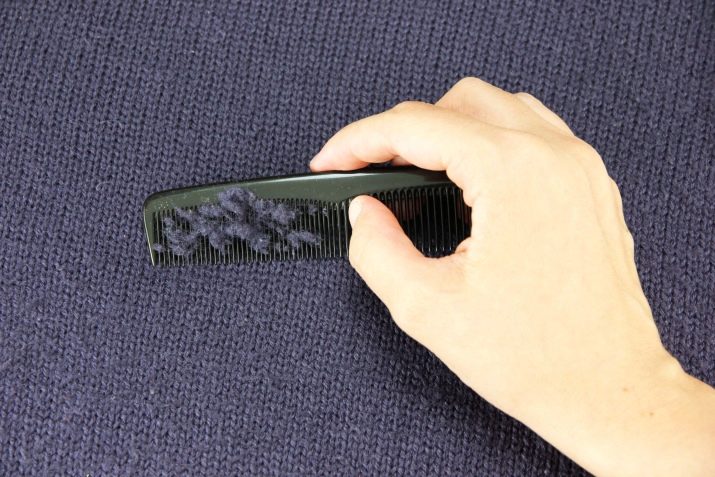
Bad advice
Sometimes it is suggested to clean woolen things with chewing gum or plasticine. The principle is the same as for scotch tape. The pellets will not be removed well, but you can easily ruin your clothes.
The gum is soft and quickly adheres to the fibers, you just can't wash it off. Plasticine contains oils and wax in its composition. Not only can he stain a thing, like gum, a greasy spot will remain an unpleasant bonus.


How to wash so that there are no pellets?
It is important to study the information on the product label. Some things can be washed, others are shown only dry cleaning. When washing in the machine, use only delicate modes, refuse to spin. In addition to woolen items, do not put other items in the drum, as they provide additional friction.
When washing by hand, do not soak for a long time, wash quickly, wring out gently, better wrapped in a terry towel. Dry in a horizontal position, away from batteries and heating appliances.
Use special detergents for wool and delicate fabrics containing components to soften the fibers. Better liquid, since washing powders dissolve poorly in warm water.
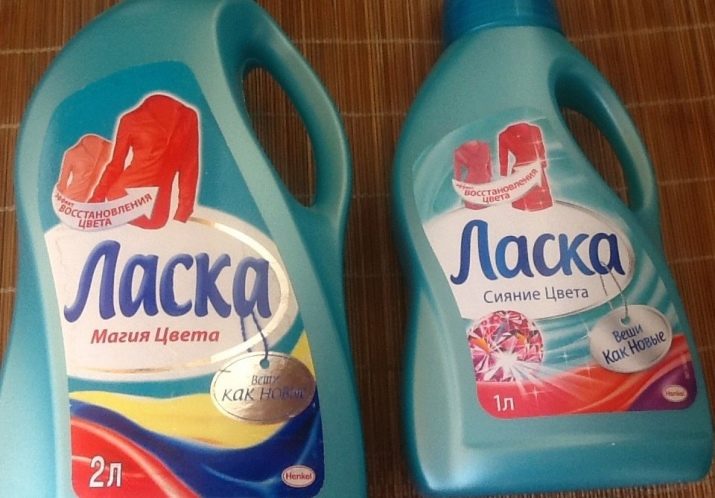
Perfectly remove pellets in dry cleaning. Additionally, the thing will be cleaned from dust and stains. Experts know how to handle delicate items. But this is an expensive service, therefore it is justified in relation to expensive things only.

The best way is to get rid of the pellets. when they first appear.
It is easier and faster to remove a few pieces than when there are many more.
How to remove the pellets from the jacket, see below.








